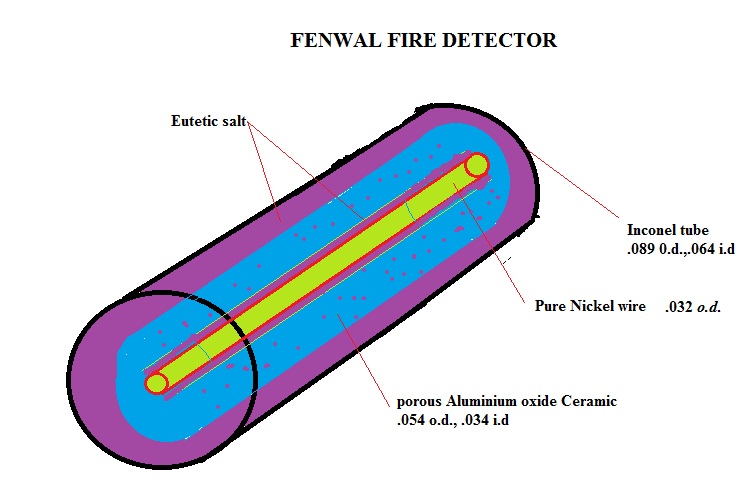
Heat Detectors react to the change in temperature caused by fire. Once the temperature rises above 135 degrees F (57 C) or 194 degrees F (90 C), the heat detector will send a signal to an alarm panel and trigger an alarm. There are two different types of heat detectors, a fixed heat detector and a rate of rise heat detector.
How does a heat detector alarm work?
Dec 23, 2021 · This will cause all sounders and sirens to activate to alert everyone. The difference between smoke detectors and heat detectors is how they activate. Smoke detectors activate when they detect smoke, and heat detectors activate when they detect high temperatures or temperatures that are rising unusually fast. In most cases, a smoke detector will detect a fire …
What temperature do heat alarms trigger?
Five Causes of PIR False Alarms. The first cause of PIR false alarms is low or unstable voltage at the detector. Test to make sure the voltage at each PIR is above 13VDC and stable. The second cause of false alarms is sudden infrared movement / heat changes in view of the detector.
How does a fixed temperature detector work?
Heat Activated Fire Alarms. Home fires are devastating and unfortunately no one know where a home fire will start. Many high risk areas such as the kitchen, dining room, attic, furnace room, utility room, basement, crawlspace, and integral or attached garage lack early detection warning equipment due to the limitations of traditional smoke alarms. That’s why industry experts …
What triggers motion detectors to trigger alarms?
Apr 04, 2019 · Here are seven of the most common causes of smoke alarm malfunction. 1. Smoke detector placement. It doesn't take a lot of smoke to trigger the alarm. If your smoke detector is within 10 feet of a cooking appliance such as your stove, toaster, or toaster oven, then this may be the cause of your false alarms.

How does a temperature operated alarm work?
If there is a fire in the vicinity of the alarm, the convected thermal energy from the flame raises the temperature of a heat-sensitive element in the heat detector. Once this occurs, the element triggers an alarm which then sounds, alerting anyone within ear-shot of the device.Aug 17, 2018
At what temperature does a heat detector activate?
around 135 degreesTypically, the preset temperature that triggers the alarm is around 135 degrees. High temperatures are a good indicator of fire (unless you have your heater set to 135 degrees). Both the rate-of-rise detectors and the fixed temperature detectors are great for sensing fires.
How does a thermistor fire alarm work?
Thermistor Temperature Detection in Fire Alarms The thermistor method, unlike the previous examples, uses heat detection to activate. The alarm activates once the thermistor detects a high temperature. Thermistor temperature detection doesn't require smoke to activate and has fewer false alarms.
Can dust activate a heat detector?
Heat detectors have been around for decades and are commonly found in restaurants, auditoriums, or industrial environments. This is because in these environments, deceptive phenomena such as cooking fumes, dry ice, or dust can cause smoke detectors to generate false alarms.Feb 3, 2018
Can heat trigger a fire alarm?
Temperature. Certain fire alarms are sensitive to heat and will go off if they sense a change in temperature (in fact, most fire alarms are a combination of heat- and smoke-activated).Feb 27, 2013
How often do heat detectors need to be replaced?
In the Handbook, the NFPA says that every 15 years the whole bunch of heat detectors in the building need to be replaced. The replacement is required because when the heat detector is tested, the fixed temperature solder ring can't be restored.
Where should I place my heat detector?
Install heat alarms on the ceiling, ideally in the centre of the room/space e.g kitchen, garage and loft. Install sufficient alarms to compensate for closed doors and obstacles.Dec 17, 2020
What do thermistors detect?
The main use of a thermistor is to measure the temperature of a device. In a temperature controlled system, the thermistor is a small but important piece of a larger system. A temperature controller monitors the temperature of the thermistor.
Which sensor is used in fire alarm?
Photoelectric sensors are the least costly and are employed widely in residential and other fire alarms. They comprise a light source, typically an IR LED and a photodetector, usually a photodiode, together with simple signal processing electronics (Figure 1), housed in a plastic enclosure.Mar 22, 2013
What can trigger a smoke detector into creating a false alarm?
Here are seven of the most common causes of smoke alarm malfunction.Smoke detector placement. It doesn't take a lot of smoke to trigger the alarm. ... Overcooked food. ... Steam or high humidity. ... Pesky insects. ... A buildup of dust. ... Strong chemicals nearby. ... The batteries need to be changed.Apr 4, 2019
What can trigger a false fire alarm?
Here are some other common causes of false smoke alarms:Smoke from burnt food or cooking.Fireplace smoke or outdoor campfires blowing indoors.Steam and High humidity.Low battery life.Excess Dust or Debris.Chemicals.Bugs.End of life.
What causes false alarm?
Approximately 80% of false alarms are caused by simple user error. Other common causes include installation mistakes and improper system maintenance. The good news is that these false alarms are largely avoidable.Jan 20, 2021
Popular Posts:
- 1. how to activate ok google on s4
- 2. how to activate solidworks conceptual designer
- 3. how to activate the teleport cheat in stick rpg 2
- 4. when did kaneki activate his cacuchka
- 5. how to activate your lats in a pull up
- 6. how to activate abilities in leathal leauge
- 7. which carriers can activate with imessage?
- 8. how do i activate my roku nbc sports app if i have a gold subscription
- 9. how do i activate pre approved payments on paypal
- 10. final reich fusebox 2 how to activate